How Laser Cutting Reduces Waste and Improves Efficiency
In today’s world of manufacturing and fabrication, accuracy, speed, and material savings matter more than ever. Businesses are always looking for ways to cut down waste, save time, and get better results, and one of the most powerful solutions is laser cutting.
Laser cutting has quickly become one of the most preferred methods in industries that deal with metal, plastic, wood, and other materials. From creating detailed shapes to cutting large sheets with precision, laser cutting offers many benefits. In this article, we will explore how laser cutting helps reduce waste and improve efficiency in simple, clear words.
What is Laser Cutting?
Laser cutting is a process that uses a high-powered laser beam to cut materials into different shapes and sizes. The laser is focused onto a small point, and its heat is so intense that it melts, burns, or vaporises the material. This leaves behind a clean, sharp edge with little to no roughness.
Modern laser cutting machines are controlled by computers using CAD (Computer-Aided Design) software. This allows for perfect accuracy and complex designs that would be difficult to achieve with manual tools. Read in detail about laser cutting and its uses in manufacturing in our separate guide.
Why Reducing Waste Matters in Manufacturing
Before we dive into how laser cutting helps, it’s important to understand why waste reduction is a big deal:
- Saves money: Less waste means fewer raw materials are used, which lowers costs.
- Protects the environment: Reducing material waste and energy use helps protect natural resources.
- Improves productivity: When waste is low, processes run smoother and more parts are usable.
- Better planning: Less waste leads to more accurate forecasting and purchasing.
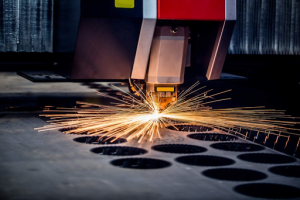
How Laser Cutting Reduces Waste
Let’s look at some clear ways in which laser cutting helps cut down waste in manufacturing:
High Precision Cuts
Laser cutting is incredibly accurate. The laser beam can cut through materials with very fine tolerances, sometimes as small as 0.1 mm. This means that parts are cut exactly to the required shape and size, with little or no excess.
When you compare this to traditional cutting tools, like saws or shears, which can cause rough edges or wider cuts, you’ll see how much cleaner and tighter this method is. Less material is removed, and less scrap is produced.
Optimised Material Usage with Nesting Software
Laser cutting machines often use nesting software, which arranges multiple parts on a sheet in the most efficient layout possible. It’s like solving a puzzle, fitting as many parts as possible onto a single piece of metal or wood with minimal space left over.
This smart planning reduces offcuts and leftover material that would otherwise go to waste. In factories that deal with thousands of cuts per day, this can lead to huge savings.
No Tool Wear = Consistent Results
In traditional cutting methods, tools like blades or punches wear out over time. As they get dull, they cause uneven cuts and waste more material. Laser cutting has no physical contact between the tool and the material, so there’s no tool wear.
This means every cut is just as good as the last one, which reduces errors, rejected parts, and material waste.
Minimal Setup Waste
Older machines often need test cuts or extra material to set up properly. This setup waste adds up over time, especially when starting new jobs. Laser cutters, especially CNC-controlled ones, need little to no test runs. Once the design is loaded, cutting can begin right away with high confidence.
This is great for custom projects and small-batch production where waste during setup can be costly.
Clean Edges = Less Rework
Laser cutting produces smooth, clean edges that usually don’t need extra work like grinding, sanding, or polishing. This means fewer damaged pieces, less scrap from rework, and fewer handling steps where material can be dropped or scratched.
Clean cuts also reduce the need for joints and welding, depending on the design, which further reduces material usage.
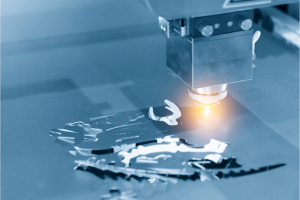
How Laser Cutting Improves Efficiency
Reducing waste is only one part of the story. Laser cutting also boosts efficiency in several ways, making production faster, smoother, and more reliable.
Fast Cutting Speeds
Laser machines can cut through materials very quickly, especially thin sheets. This speed reduces the time needed to complete a job, allowing more work to be done in less time.
In high-volume industries like automotive or electronics, every second counts. Faster cutting means more parts per shift and lower production costs.
Automation and Less Manual Labour
Laser cutters are usually controlled by computers and can run with little supervision. Many machines can even load and unload material automatically.
This reduces the need for manual labour, decreases human error, and allows workers to focus on other tasks. It also shortens training time because the machine does most of the work.
One Machine, Many Jobs
Laser cutters are versatile. They can cut, engrave, and mark many different materials such as:
- Mild steel
- Stainless steel
- Aluminium
- Plastics
- Wood
- Acrylic
Because one machine can handle so many jobs, there’s no need to change tools or machines for different materials. This saves time and space in the workshop.
Quick Change Between Designs
Switching from one design to another is simple. Just upload a new digital file, and the machine starts cutting immediately. This is a big time-saver for businesses that do custom orders, short runs, or prototype testing.
With traditional machines, changing dies or blades takes time. Laser cutting skips all of that.
Reduced Downtime
Since there are no mechanical parts touching the material, laser machines need less maintenance. There’s less risk of damage, fewer moving parts to replace, and fewer production delays due to breakdowns.
Fewer problems = more uptime = more efficiency.

How Kirmell Uses Laser Cutting for Smart Production
At Kirmell Ltd, laser cutting is a key part of how we deliver accurate, high-quality metal components to our clients. Our modern machines are used to cut mild steel, stainless steel, and aluminium parts with tight tolerances and smooth finishes.
By using CNC-assisted laser cutting and efficient nesting software, we make sure that materials are used wisely and waste is kept to a minimum. This helps our clients save on costs while still receiving parts that meet strict quality standards.
Conclusion
Laser cutting not only makes factories more productive, it also supports sustainability goals. With less waste, lower energy usage, and fewer reworks, manufacturers reduce their environmental impact while keeping quality high.
This is especially important as more companies aim for green certifications and eco-friendly production.
Looking for Expert Laser Cutting Services? Choose Kirmell Ltd
If you need fast, precise, and reliable laser cutting services, Kirmell Ltd is here to help. We provide custom solutions for small to large projects, using high-end machines and expert staff.
Whether you’re cutting steel sheets for brackets or aluminium panels for enclosures, we ensure minimal waste and maximum efficiency. From design to delivery, your parts are made to exact standards on time and within budget.
Message us today at [email protected] or fill out the form provided on the contact us page, and our expert will get in touch with you.
FAQs
How does an industrial laser cutting machine reduce waste?
Why is laser cutting important in the aerospace industry?
What are the benefits of using an industrial metal laser cutting machine?
Can laser cutting machines work with multiple materials?
Does laser cutting help with energy efficiency in production?

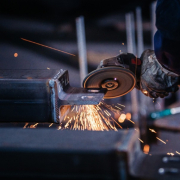
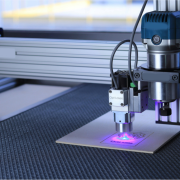
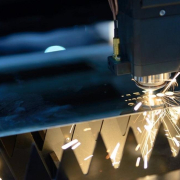
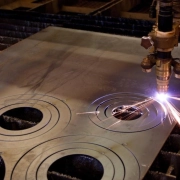
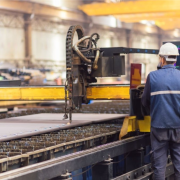
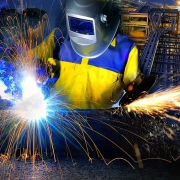
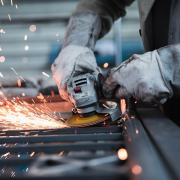
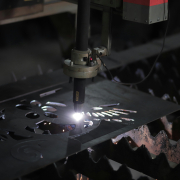


Leave a Reply
Want to join the discussion?Feel free to contribute!